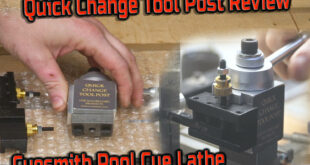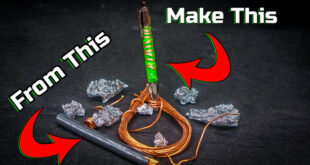When you are just starting to get into making of any kind especially woodworking one of the first things you will need is a workbench to give you a good platform to work on. Your workbench can also be one of the biggest issues in figuring out how to build due to the work bench taking up so much space. When designing this workbench I wanted to keep it portable as well as affordable. With that in mind this is how to make a completely portable workbench for $100 or less using only simple tools. You can build this bench in only one afternoon in your back yard. Here is the materials and tools you will need.
Materials: Sawhorses , 2 inch wood screws, One 4 x 8 x 1/4 inch plywood, Three 8 Ft 2×4.
Tools: Circular Saw, Drill, Tape Measure, T-Square or Chalk Line , Carpenters Pencil, Orbital Sander, Sand Paper, 3/4 inch Forstner bit, Clamp.
Gather Your Materials


First thing you want to do is to gather up all of your materials and tools. I have link previously listed in the instructable for all of the tools you will need as well as a list of materials. You can buy the materials at any local home supply store. Lowes also carries the Kobalt folding sawhorses usually in stock. You can go with standard or treated lumber. Using treated lumber as I did is a bonus as the lumber is water resistant and will not fall apart if you need to leave the bench outside or if it comes in contact with moisture. Though it will cost a few dollars more to use treated lumber but prices vary depending on where you purchase the lumber at. Laying out your tools and materials will help to make sure you have everything you need and that nothing essential is missing.
Confirm Dimensions


With all of you materials laid out take a look at the plans and confirm the dimensions. For this bench the runners will be 72 inches long and positioned within the placements on the sawhorses. There are a couple of options that can be used for the bench top. The first is to cut the bench top flush with the runners on both sides and the ends. The other is to use the plywood sheet at full width as the table top witch I choose to do. This to me was not only easier but gave a larger work area as well as more area to clamp to around the edges of the work top.
Set Up Your Saw Horses



You can use other style saw horses for this build. That being said these Kolbalt folding sawhorses are awesome when it comes to portability. While they are a little different to get used to while setting up and taking down they work great and are very sturdy. As we start building this work bench we are going use the sawhorses to built the bench-top on them as we go. Start by setting up your sawhorses and spread them only far enough apart to support both 2 x 4 boards.
Measure and Cut Runners to Length



2 More Images
The runners now need to be measured out and cut to length. The runners will be cut to 72 inches in length. Mark the runners from one end and then use circular caw to cut the runners to length. After cutting the first runner to length check for the correct length of cut and then use that board to confirm the cut for the second runner. This will help when aligning the top to the runners. After both runners are cut place them both in there slots on the sawhorses and move the boards and sawhorses to a position where the sawhorses are positions 3 to 6inches from the end of each board on both ends. This will give the most support for the runners as well as the most stability of the entire work bench.
Cut and Install Center Supports



With the runners in position on the sawhorses you now need to cut and install the center supports. The supports are spaced 24 1/4 inches at the center from each end of the runner. Start by marking the center of where the support will be installed on each runner. Mark your first mark on the top of the runner and use a t-square to transfer the line down the sides of each runner. Repeat this process from each end of both runners. Now you will drill and counter sink two holes on the vertical line you just struck on the side of runner. After all of the countersink holes are drilled measure out the distance between the two runners. Make sure to measure the distance on the interior of the runners. Mark that length on the remaining 2 x 4. Then cut the board to length. After cutting the first support test fit the board between the two runners. The support should slide into place with little resistance but touch both sides. If fitment is correct use the first support as a guide to mark and cut the second. After both supports are cut to length mark the center of the top edge of the supports. With the mark facing up line up the center mark on the support with the mark on the runner. Hold the support in place with a clamp. Move to the other side of the support. Line up the center mark on the support with the corresponding mark on the runner. Using the 2 inch wood screws, screw the center support in place. Move back to the previous side of the support use two more screws to attach the support to the runner. Make sure not to over tighten the screws. Repeat this process for the second support.
Measure and Cut the Table Top.



Now that the base of the workbench is complete it is time to complete the top. Place the plywood sheet onto the top of the base. Measure the plywood sheet from one end to 72 inches. This should be done on both edges of plywood sheet. Once both marks are made use a large t-square, straight edge or chalk line to strike a line on the plywood. Move the plywood where the line is hanging off of the runners and clamp the plywood sheet into place. Using the circular saw cut the plywood sheet along the line you just marked. Hint: measure the distance from the edge of your saw blade to the edge of the base plate of your saw and subtract that distance. Clamp a straight edge in place there. Before you cut check that the the straight edge is properly placed to a line the blade of your circular saw to the waste edge of the mark previously struck. This will give you a straight cut along the line.
Secure Bench Top


Line up the ends of the plywood top with the ends of the runners. If properly cut the plywood will line up flush with the end of each runner. Clamp the plywood into place to ensure it does not move. Using the tape measure mark a line 24 1/4 inches from each end of the plywood. (This is if the edges are flush with the ends of the runners). Repeat this process on the opposite edge of the top. With all four marks made strike a line across the plywood at the marks. This should give you a line along the center of the interior supports witch to secure the top to. Pre-drill and countersink a minimum of 4 holes along the length of the runners and three holes along each center support. Once all the holes are drilled mount the top using the two inch screws. Make sure to not over tighten the screws.
Mark Dog Leg Hole Position


With the bench-top mounted it is now time to mark the position of the holes for dog legs and clamps. With this design there is a ton of placement for clamping to the work bench. For this process first measure 6 inches from one end and strike a line. From this line mark and strike a line 4 inches from the first. Repeat this process every 4 inches for a total of 16 lines. Now that all width lines are marked place a tape measure on the first line and mark the first cross line 6 inches from both edges of the workbench. From that line mark a cross mark every 4 inches to a total of 8 cross marks.Where the two lines intersect will be the points where you will drill. Repeat this process on each of the 16 lines previously marked. This will give you a total of 128 points to use for clamping and dog legs.
Drill Some Holes



Once you are finished marking all points on the bench top it is time to break out the drill. Using a 3/4 inch forstner bit drill the holes out at all of the points marked previously. I suggest using a freshly charged battery if using cordless with extra batteries if available. If you have a corded drill it will make things a little easier as you will not have to change batteries. Drill all 128 holes completely through the bench top. Also make sure on the far ends of the board not to drill into your sawhorses. Once all 128 holes are drilled vacuum or sweep off all debris from the workbench.
Sand Workbench Top

Now sand the workbench top using 80 grit sand paper and working your way up to at least 300 grit. Cover the entire top of the workbench making sure to not miss any areas and remove all jagged or rough spots caused form the drilling. You may also apply any finish you would like but since I used treated lumber for the entire workbench I decided it was not needed.
Start Working

Now for $100 or less you have a completely portable workbench. So get to working. This bench will suit all of your work needs with plenty of capability to clamp or hold down your work piece. As well as strong enough to hold heavy projects without a problem. I hope you find this very useful. I myself work from a very small shop. The idea that I can break down my workbench and move it out of the way when the space is needed is very helpful. If you have any question leave them in the comments below.
Make sure to go subscribe on Youtube Subscribe Here.
Follow me on Instagram for daily photos and videos: @jpaynewoodworking
Follow me on Facebook as well.
If you want to show your support head over to my Etsy or Patreon.
Thank you for watching and I will see you on the next one!
 JPayne Woodworking Creative Craftsmanship
JPayne Woodworking Creative Craftsmanship


